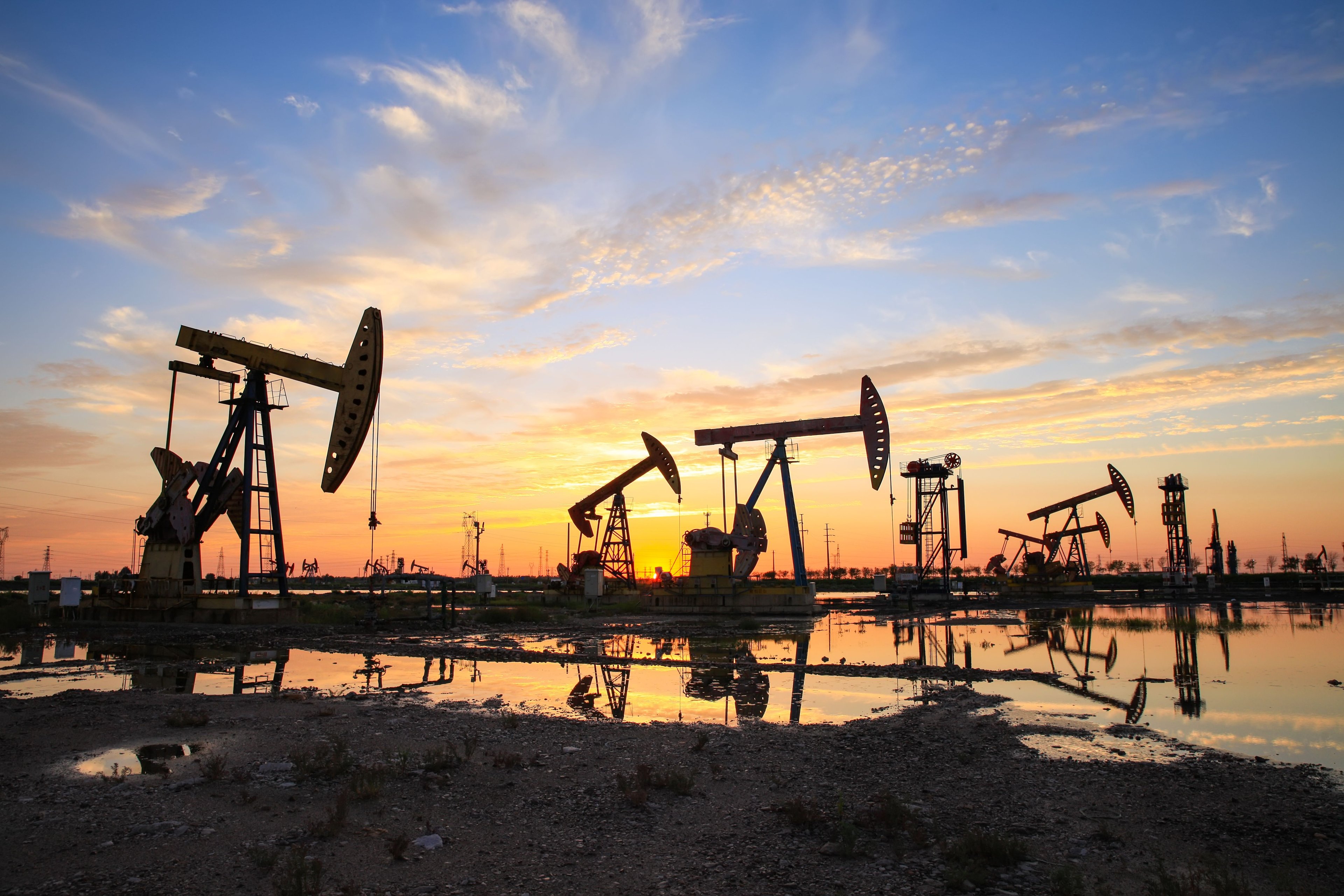
Image source: Helmerich & Payne corporate website
There haven't been many reasons to celebrate if you are an investor in Helmerich & Payne (HP 2.48%) as of late. Even though oil prices have climbed toward the $50 range, rig counts in the US are still at or near all time lows. As bad as the market may be right now, Helmerich & Payne's management still heartily believes in its strategy, and it was sure to point that out in its most recent conference call. These 5 quotes from that call give a pretty good glimpse into what management is thinking and what investors should be on the lookout for in the coming quarters.
The right assets
Oil and gas rigs have gone through more changes in the past decade than the 100 years prior. Today's rigs can drill down 10,000-12,000 feet, turn on a dime, and then drill horizontally for another couple of miles. It's thanks to these new, high specification rigs that we have been able to unlock oil and gas in shale wells at economic prices. Helmerich & Payne CEO John Lindsay wants to remind investors that H&P has the largest fleet of these rigs -- called AC drive, Tier 1 rigs in industry lingo -- in the US.
The industry has also formed a consensus view that 1,500-horsepower AC drive, Tier 1 rigs provide the best drilling performance for drilling the most challenging horizontal wells. H&P's fleet has over 30% of the estimated 700 rigs in the U.S. market today that fit that description. We believe H&P's rigs are strategically placed and ready to mobilize quickly.
Having these rigs has been incredibly valuable for Helmerich & Payne during this downturn as producers have shut down operations with older rigs and focused on working with a small fleet of highly efficient rigs. This has led to H&P taking market share.

Image source: Helmerich & Payne investor presentation
Still going to have some rough times in the near future
As oil prices have started to slowly tick back up from lows in January, there is some thought that the company might start to see an uptick in business. Before anyone got ahead of themselves, CFO Juan Pablo Tardio wanted to remind everyone that for at least the next quarter, things will continue to look bleaker.
Looking ahead to the third quarter of fiscal 2016, we expect the decline in the range of 25% to 28% in the number of total revenue days quarter-to-quarter.
Helmerich & Payne's revenue and income have been on a steady decline for several quarters now, but the company has so far been able to eek out slight profits that keep the company afloat and support its 43 year long streak of raising dividends. These next several quarters could be a true test of whether the company can keep this going.
Mixed signals on the horizon
On top of that less than stellar guidance for the next quarter, CEO John Lindsay was also quick to point out that the company is in discussions with many of its oil and gas producing clients as to when they will start putting rigs to work again.
With the market intelligence we have today, we expect to see further deterioration in terms of drilling activity during the third fiscal quarter. That said, we are seeing more indications that the bottom of the cycle is nearing. The question remains how quickly E&P companies gain enough confidence in the market to begin investing back into the business and putting idle FlexRigs back to work.
We will see an uptick in demand eventually. Growing demand for oil and delayed production spending is setting the table for a time when we will need to invest in the sector again. When that actually happens still appears to be beyond the best guesses of even the most in tune people in the market like H&P's management team.
The benefits to the bottom line (when it comes)
Operations like Helmerich & Payne's has a lot of variable and fixed costs. Those fixed costs can be things like hanging onto key personnel or maintaining assets. As less and less rigs are at work, those fixed costs become a larger portion of the company's cost structure. As those idle rigs get put back to work, though, the fixed costs can be spread around and really drive results to the bottom line. As Lindsay pointed out, fixed costs are such a high percentage of the current cost structure that bringing on incremental rigs won't come at huge additional costs.
I think putting out the next 10 rigs, 20 rigs, 30 rigs would be a very low cost for us. The good news for us, obviously, as you would increase your revenue days, so your denominator would increase. I mean, that's part of what's driving our costs up. Cost in general on rigs that are actually working are very reasonable, it's the other costs that we have associated. So I think the more rigs we can put back to work, the better off we're going to be in terms of our total cost per day.
A protected payout?
With that long dividend streak also comes a certain responsibility to keep it up. After all, no CEO wants to be the one that has to end a 43 year dividend increase streak. So Tardio wanted to point out that even though the company is in the middle of a very rough patch, its financial house is in order and there is a decent amount of work left on the books.
Our strong balance sheet and high liquidity position, along with our firm backlog of long-term contracts and reduced CapEx requirements, should continue to allow us to return cash to shareholders by sustaining the level of our regular dividend payments as previously discussed. Excluding rigs with long-term contracts that have already been early terminated and combining all 3 of our drilling segments, we currently have an average of approximately 99 rigs under term contracts expected to be active in fiscal 2016, 78 in fiscal 2017 and 47 in fiscal 2018. Our backlog level as of March 31, 2016, was at approximately $2.3 billion.
What a Fool believes
The things that both Lindsay and Tardio didn't reveal were some deep held secrets about what's going on in the market. Instead, they provided a reminder that no one can time the market precisely, and that the best way to ride out the tough times is to rely on great businesses with good management teams and a sound financial standing. As we head into the coming quarters, investors should continue to watch to see if the company can continue to take a few more quarters of miserable performance without having to tap the strength of its balance sheet.




